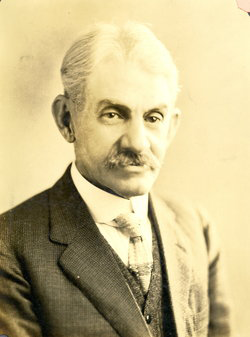 Independence has gone through quite a few changes over the years, but some things that remain the same are the unique people, amazing cultural heritage, and fascinating history. Gaston Raoul established the Southern Car Company to manufacture railroad rolling stock, and the town originally known as Uncle Sam began to establish around his plant in 1837. After the Civil War, Major Henry McComb moved the car works to McComb Mississippi. The New Orleans and Nashville Railroad Company took on the town as a project, and envisioned a thriving future for the community, featuring a college, theatre, market, and churches. While most of these goals were not achieved, the town did continue to grow and thrive in its own way.
Independence has gone through quite a few changes over the years, but some things that remain the same are the unique people, amazing cultural heritage, and fascinating history. Gaston Raoul established the Southern Car Company to manufacture railroad rolling stock, and the town originally known as Uncle Sam began to establish around his plant in 1837. After the Civil War, Major Henry McComb moved the car works to McComb Mississippi. The New Orleans and Nashville Railroad Company took on the town as a project, and envisioned a thriving future for the community, featuring a college, theatre, market, and churches. While most of these goals were not achieved, the town did continue to grow and thrive in its own way.
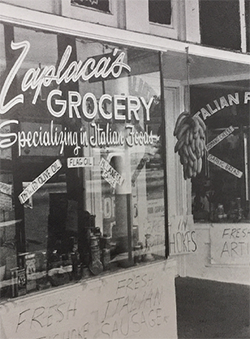 The Railroad Company hoped dairy farming would take off. However, during the 1830s, citizens recognized the slightly acidic soil of Independence was perfect for growing strawberries. Soon the area was attracting many settlers to grow luscious berries in the fertile ground, and a new railroad company came as well.
The Railroad Company hoped dairy farming would take off. However, during the 1830s, citizens recognized the slightly acidic soil of Independence was perfect for growing strawberries. Soon the area was attracting many settlers to grow luscious berries in the fertile ground, and a new railroad company came as well.
While all of this was occurring, Independence was still not recognized as a town. State Representative Harry D. Wilson was determined to see Independence thrive, and constantly promoted the area. Affectionately known by voters as “Uncle Harry” or “Mr. Harry,” Wilson served in the State House from 1900-1904 and 1908-1912. Through his correspondence with then Governor William Wright Heard in 1902 and 1903, Independence was finally chartered as a town during his second term in 1912. Harry D. Wilson went on to serve from 1918-1948 as the Louisiana Commissioner of Agriculture and Forestry.
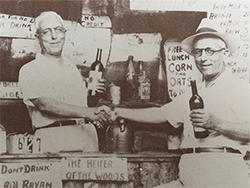 The Town of Independence is home to many ethnicities, but it is mostly known for its large Italian-American population. Italian and Sicilian immigrants began settling in the town as early in the 19th century, which sparked rapid growth in the town. These settlers opted to forsake the cane fields of Louisiana’s sugar country for the strawberry fields along the Illinois Central in Tangipahoa Parish.
The Town of Independence is home to many ethnicities, but it is mostly known for its large Italian-American population. Italian and Sicilian immigrants began settling in the town as early in the 19th century, which sparked rapid growth in the town. These settlers opted to forsake the cane fields of Louisiana’s sugar country for the strawberry fields along the Illinois Central in Tangipahoa Parish.
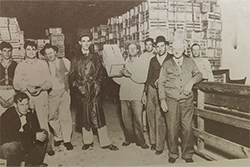 These settlers were extremely hard workers. They fed their families almost exclusively on small vegetable gardens, chickens, goats, the bread they baked, and pasta that they made. Despite the discrimination, they persevered as sharecroppers and became landowners. When they became landowners they grew an abundance of crops, making a significant impact in the strawberry industry, and in 1904 Independence berry farmers sold 275 carloads of strawberries valued at $500,000.
These settlers were extremely hard workers. They fed their families almost exclusively on small vegetable gardens, chickens, goats, the bread they baked, and pasta that they made. Despite the discrimination, they persevered as sharecroppers and became landowners. When they became landowners they grew an abundance of crops, making a significant impact in the strawberry industry, and in 1904 Independence berry farmers sold 275 carloads of strawberries valued at $500,000.
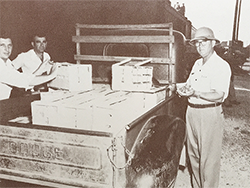 Independence today is home to many second and third generation Italian-American doctors, nurses, pharmacists, bankers, businessmen, principals, teachers, and successful politicians. According to a recent census, the estimated current population is 1,888 people. The growing Italian presence has had an impact on Tangipahoa Parish. Known as “Little Italy,” the Independence Italian-American Cultural Association was formed, partially through the efforts of State Representative Frank L. Anzalone. Built in 1908, the old Mater Delarosa Catholic Church now holds the Independence Italian Cultural Museum, where friends of the museum and guests can take Sicilian language classes or learn more about the rich Italian heritage of the region. The first Little Italy Festival was held in 1961 in the Mater Delarosa School Square. Every year since then visitors flock to Independence in the second week of March for what is now known as the Sicilian Festival.
Independence today is home to many second and third generation Italian-American doctors, nurses, pharmacists, bankers, businessmen, principals, teachers, and successful politicians. According to a recent census, the estimated current population is 1,888 people. The growing Italian presence has had an impact on Tangipahoa Parish. Known as “Little Italy,” the Independence Italian-American Cultural Association was formed, partially through the efforts of State Representative Frank L. Anzalone. Built in 1908, the old Mater Delarosa Catholic Church now holds the Independence Italian Cultural Museum, where friends of the museum and guests can take Sicilian language classes or learn more about the rich Italian heritage of the region. The first Little Italy Festival was held in 1961 in the Mater Delarosa School Square. Every year since then visitors flock to Independence in the second week of March for what is now known as the Sicilian Festival.
Whether you’re visiting for a slice of history or for a scrumptious Italian plate of spaghetti and meatballs, Independence is always happy to welcome guests and new residents. The amazing culture cultivated by the town has created the perfect place to live and raise a family, and we know if you visit you’re gonna love it!